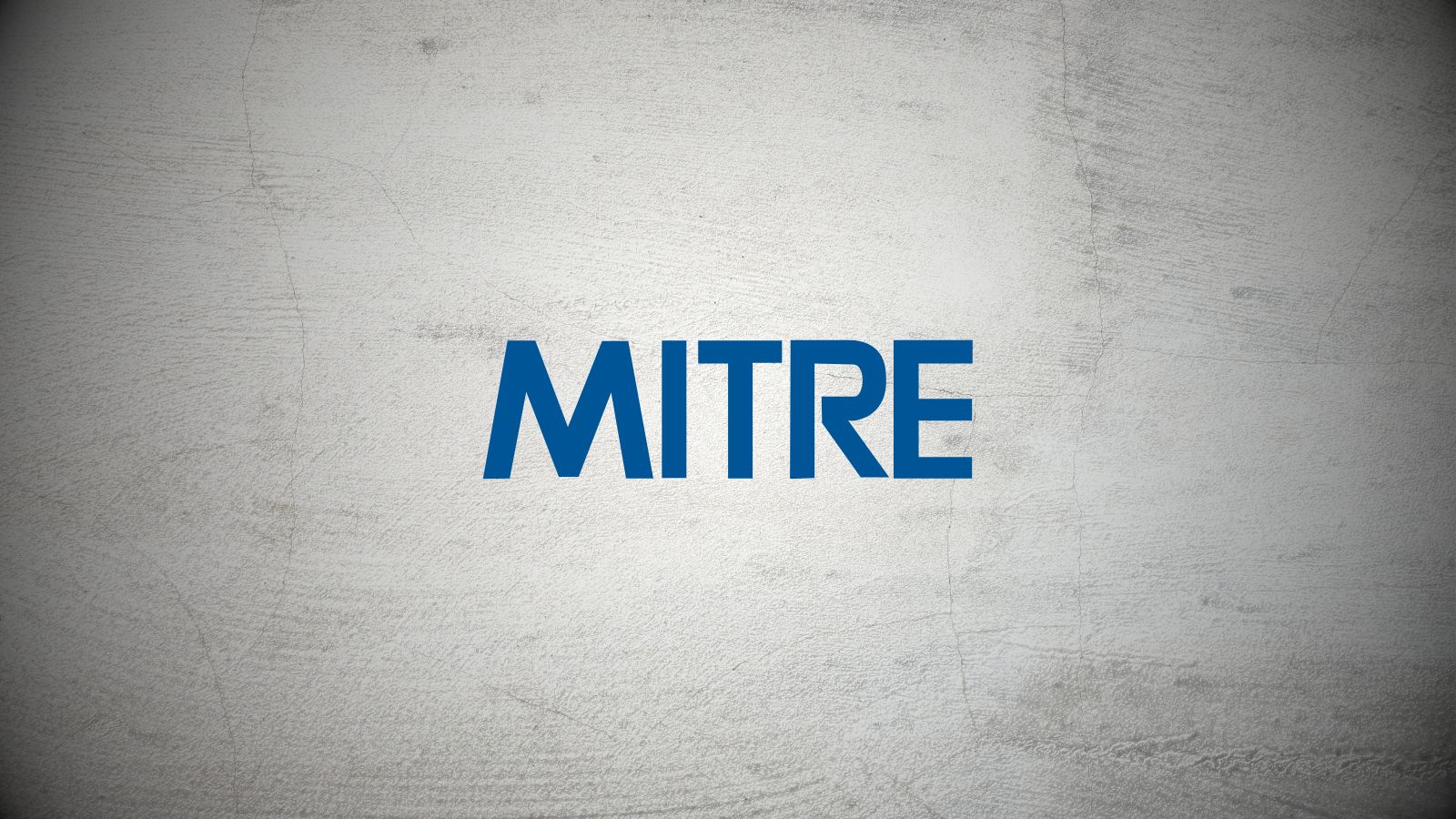
10 Best CPUs for HEDT Computing and Workstations to Buy in 2021
CPUs have come a long way, and over the past two years, we've seen both Intel and AMD push core counts and speeds like never before. While we've discussed the best CPUs overall, we will focus on the options available in the HEDT CPU market in this article. HEDT or High-End Desktop Computing is a fast-growing niche that caters to content creators who require excellent performance for CPU-intensive tasks. As such, these processors sport very high core counts and massive cache sizes.
The HEDT segment really got a push with the launch of the AMD Threadripper series in 2017. The Threadripper processors brought high core counts into the consumer space and offered multi-taskers a near-perfect solution for a lot less price than typical enterprise offerings.
While considering a HEDT CPU, there are some points to keep in mind. Most importantly, decide on the workflow before choosing a processor. These processors can multi-task well, but if you are primarily used to push frame rates in games, this is not the ideal processor option. That being said, for gamers who simultaneously stream their gameplay to sites like YouTube and Twitch, these CPUs are excellent. None of these CPUs offer integrated GPUs, so you should factor in the purchase of a capable dual or Quad-GPU solution as well. The overall cost of the HEDT ecosystem can get very high so make sure you're up for it. It also helps to have knowledge of Linux to get the best out of these processors.
So, with that information, here are the 10 best HEDT CPUs to buy in 2021.
1. AMD Ryzen Threadripper 3970X
The Ryzen Threadripper 3970X is the latest HEDT CPU to come from AMD's stable. The Threadripper 3970X belongs to the new 3rd generation Threadripper family, which brings the benefits of moving to a 7nm process. The 3rd generation Threadrippers come with increased core counts, support for PCIe Gen4, and new memory configurations. The third generation Threadrippers are not backward compatible with the X399 platform as AMD has moved to a new socket TRX4 that requires the new TRX40 chipset. This generation is also set to bring 64 cores to the mainstream HEDT market when the Threadripper 3990X becomes available later this year. AMD has worked with Microsoft to ensure that the Windows scheduler is able to properly designate load to all the cores, which should mean a more responsive and efficient workstation PC. The Threadripper series is not really meant for gamers as there are hardly any games that make proper use of multi-core CPUs. That being said, you can disable some of the cores for improved performance while gaming.
The Threadripper 3970X is currently the best performing HEDT CPU in the market. That is, of course, until the 64-core 3990X becomes available. The 3970X eats heavy multi-threaded workloads for breakfast, with benchmark apps like Cinebench and V-ray showing record-breaking scores. The slightly higher TDP than last-gen Threadripper allows for more headroom — it is now possible to run all 32 cores at 4.1 GHz and allow for full PCIe Gen4 compatibility. The Threadripper 3970X is not for everyone. Those who are in creative industries and require all the processing power they can get will immensely benefit from it. If you opt for this processor, ensure that you have enough budget to spend on the best CPU cooler.
- Pros: Most powerful HEDT processor; PCIe Gen4 support
- Cons: None as such
2. AMD Ryzen Threadripper 2990WX
The AMD Ryzen Threadripper 2990WX is a beast of a processor and is one of the most powerful and expensive processors money can buy for high-end HEDT and workstation performance. Perhaps, for the first time, we are seeing a massive 32 cores and 64 threads of processing power for demanding workflows, which was once exclusively the domain of servers and render farms. The Ryzen Threadripper 2990WX has a base clock of 3 GHz and can boost up to 4.2 GHz under load. The massive 80 MB L3 cache minimizes latency and can easily carry huge amounts of data between individual processing clusters. The Threadripper 2990WX is based on the TR4 platform, which is supported by the X399 chipset.
The biggest advantage of the Threadripper CPU family is the availability of a large number of PCI Express lanes to meet large GPU, and NVMe SSD needs. Normal consumer CPUs are limited to either 12 or 24 PCI Express lanes that limit expandability. The Threadripper CPUs support a massive 64 PCI Express lanes, which means you can be thrown in a large number of SSDs in RAID or use quad-GPU setups without issue. Add to it the support for the latest AMD technologies such as SenseMI and Ryzen Master, and you have one of the best HEDT and workstation CPUs ever made.
There are few factors to keep in mind, though. Although it works like one, the Threadripper is not a server CPU. The high TDP requires a good cooling setup. AMD's solution works well, but you would want better cooling solutions if you want to overclock it. You should also use as fast as RAM as possible, at least 3000 MHz+ plus, to minimize latency in data transfer. Gamers would be better off looking for lesser core count processors.
- Pros: Best workstation performance; High core and thread count; High PCIe lane count
- Cons: Requires proper cooling; Not really suited for gamers; Works best with fast RAM
3. Intel Core i9-10920X
With AMD offering excellent HEDT workstation CPUs, Intel has been somewhat lagging behind. The company introduced the 10th gen Cascade Lake HEDT CPUs at much-reduced prices to combat AMD's rise in market share. The Core i9-10920X is a 12-core 24-thread processor that features 48 PCIe lanes and support for quad-channel DDR4-2933 RAM. While AMD offers support for PCIe Gen4, Intel continues to remain on Gen3. While this shouldn't be a major issue as there aren't too many devices that can take advantage of Gen4 speeds, storage devices such as NVMe drives are now available in Gen4 variants that can offer high-speed data transfer rates, which are useful for creatives working on heavy projects. Another disadvantage we see here is that AMD has now moved on to offer 7nm chips while Intel is still stuck on 14nm. This means there is a limit to how many cores Intel can offer on the same dye without increasing its physical size. The Cascade Lake HEDT CPUs are compatible with older X299 motherboards, but you will need the newer X299 boards if you wish to take advantage of all the 48 PCIe lanes.
Having said that, Intel has traditionally had better single-core performance and offers more overclocking headroom compared to AMD's offerings. However, you need to invest in a quality aftermarket liquid cooling solution in order to get the best performance out of the Core i9-10920X without thermal bottlenecks. Gaming is Intel's stronghold as well, but HEDT CPUs aren't really meant for gaming, and in fact, some games fail to recognize the extra CPU cores and suffer from a lowered performance. The Core i9-10920X performs well in workstation CPU benchmarks such as SPECworkstation 3 and NAMD, but we find the scores lagging behind competing for AMD offerings. Still, the Cascade Lake HEDT CPU family is one of the best overclocking HEDT CPUs if you like to spend less and do not require PCIe Gen4 speeds.
- Pros: Good performance in heavy workloads; Good overclocking headroom
- Cons: Still on PCIe Gen3; Still on 14nm process
4. AMD Ryzen Threadripper 2950X
If a 32 core 2990WX is overkill, consider the AMD Ryzen Threadripper 2950X. The Threadripper 2950X sports 16 cores and 32 threads with a base clock of 3.5 GHz and a boost clock of 4.4 GHz. The 2950X is based on the Zen+ microarchitecture that was first introduced last year. Like the 2990WX, the Threadripper 2950X can support 64 PCI Express lanes and up to 2 TB of quad-channel RAM. Due to the lower core counts and higher clocks compared to the 2990WX, the 2950X suits a larger range of workflows and is also easier on the pocket. Compared to the first generation Threadrippers, the 2950X offers improved performance across all areas. The best part is that all new Threadrippers are backward-compatible with the original X399 motherboards, making sense as the boards are expensive. Older boards should easily accommodate the 180W TDP of the Threadripper 2950X and although AMD supplies the required cooler, having a much better cooler affords more overclocking headroom.
AMD's algorithms for overclocking allow for dynamically tuning the frequencies based on the available temperature headroom. Therefore, it is beneficial to have a large roomy E-ATX cabinet with a good cooling solution, preferably a water block, if you want to push the 2950X hard. That being said, if you already own an older generation Threadripper such as the 1950X, there is little incentive to upgrade to the newer version.
- Pros: Excellent performance for both gamers and content creators
- Cons: None as such
5. Intel Core i9-7980XE
The Intel Core i9-7980XE is the flagship HEDT processor from the Skylake-X lineup. It features 18 cores and 36 threads and offers a base clock of 3 GHz that can Turbo Boost up to 4.4 GHz under load. The Core i9-7980XE has more L3 cache than the 7900X, so it suits many CPU-intensive apps although, gaming does get a bit affected. The processor offers 44 PCI Express lanes and support for quad-channel DDR4-2666 RAM. The X299 chipset offers native support for Intel Optane memory. Intel Optane is a storage technology that uses SSDs to temporarily store fast-moving data from the hard drive for faster access. While the Threadrippers are easily the best value performance-wise, the Core i9-7980XE beats them in single-thread performance. Skylake is also a more mature platform by now compared to Threadripper, which has just been a recent launch. This is an important factor that enterprises consider when deploying such CPUs in mission-critical workflows. More importantly, the 7980XE can Turbo Boost across all 18 cores instead of just a few ones.
Unlike AMD, Intel does not ship any stock coolers with their HEDT lineup. So you will have to factor in the costs of a robust aftermarket cooler. Power draw is high, but such is the nature of the processor. Remember that you need to fiddle around with the overclocking settings in order to get the most out of this chip. This is where Intel disappoints a bit. The 7980XE still use the inefficient thermal paste to seal the heat spreader to the CPU die. In contrast, AMD uses soldering to ensure better thermal conduction.
Of course, not everyone will benefit from this processor. You need to be really aware of fiddling around with overclocking and voltage settings in order to extract the maximum performance. If you aren't too sure about all that, we'd recommend going for a consumer CPU such as the Core i9-9900K or below. However, if you do have the means for justifying this purchase, get ready to break CPU benchmark records.
- Pros: Excellent performance, Lots of overclocking potential
- Cons: No bundled stock cooler, Thermal paste for IHS, Large power draws
6. Intel Core i9-9900X
The Intel Core i9-9900X marks the 9th generation of Intel's HEDT offerings called the Skylake-X Refresh. The 9900X offers 10 cores and 20 threads with a base clock of 3.5 GHz that can Turbo Boost up to 4.4 GHz on load. It has a 19.25 MB L3 cache and operates at a TDP of 165W. The 9900X can support 44 PCI Express lanes and quad-channel DDR4-2666 RAM. The Core i9-9900X offers good performance for both single and multi-thread workloads. The 9900X is still based on the 14nm fabrication process but now offers a soldered thermal interface material, unlike the thermal paste in the 7900XE.
The performance of the 9900X in most CPU benchmarks is excellent. It faces stiff competition from AMD's Threadripper lineup but manages to outperform it thanks to an improved single-core performance that benefits creative workflows and gaming. All said and done. The Core i9-9900X does skip out on some features. It does not support ECC memory and is still power-hungry. The added premium that you pay compared to AMD's offering is also a factor to consider. The 9900X offers 10 cores that should suffice for the most demanding purposes, but if you are the one who does a lot of multi-tasking, then it becomes necessary to think of higher core-count options. So, while the 9900X is one of the best workstation CPUs for gaming as well, AMD has a better all-rounder option. If you are moving from a previous generation Intel HEDT CPU, the chances are that you may not find the improvements in this generation very significant.
- Pros: Great for workstation and gaming performance
- Cons: Expensive; No ECC RAM support; Not much of a performance improvement over the previous generation
7. AMD Ryzen Threadripper 1950X
The AMD Threadripper 1950X started the trend of making HEDT and workstation CPUs making their presence felt in the mainstream market. What started off as an attempt to compete with Intel's server offerings has now become one of the best workstation CPUs to date. AMD made the Threadripper 1950X to cater to content creators, heavy multitaskers, and gamers who simultaneously game and stream to services such as Twitch. While we have the newer generation Threadrippers, the first generation of 1950X still a formidable CPU for content creators. Featuring 16 cores and 32 threads with a base clock of 3.4 GHz and a boost clock of 4.0 GHz or 4.2 GHz depending on the XFR boost, the Threadripper 1950X offers content creators, gamers, and streaming everything they need for a great computing experience. The Threadripper 1950X outshines almost every mainstream CPU when it comes to CPU-intensive benchmarks.
While the 1950X is an excellent proposition for content creation, gamers might not be particularly needed this much horsepower, and very few games are actually optimized for such high core counts. Some games might even have difficulties in loading in the first place. Of course, AMD offers the Ryzen Master utility to disable some of the cores while gaming, so this isn't really much of an issue. Just ensure that you are gaming at resolutions above 1440p for better results. One thing that should be definitely factored-in is the overall cost of putting together a fully loaded Threadripper system. X399 motherboards are not exactly cheap, and in all probability, you also need a beefy aftermarket cooler and fast DDR4 RAM with tight timings.
- Pros: Great for multi-taskers and content creators
- Cons: Needs a good aftermarket cooler and fast RAM
8. AMD Ryzen 9 3950X
The Ryzen 9 3950X is AMD's flagship consumer CPU. It does not really come under HEDT CPUs — we have the Threadripper series for that — but given the high core counts and speeds, one would immensely benefit from considering the 3950X when starting out on intense projects. We should mention here that the Ryzen 9 3950X does not feature some of the bells and whistles that Threadripper offers, such as high PCIe lane counts or quad-channel memory support. However, this is the best mainstream desktop processor you can get that can come close to the workstation-class performance. Having 16 cores and 32 threads is no small thing, and the efficient 7nm process combined with PCIe Gen4 support means that you get all workstation essentials, that too in just 105W TDP. Unlike other AMD Ryzen processors, the Ryzen 9 does not ship with an inbox cooler, and AMD recommends that you buy an aftermarket liquid cooler instead. The Ryzen 9 3950X is a combination of two 8-core CCDs, which are binned to offer excellent performance out of the box. As such, the processor supports an automated overclocking based on the available thermal headroom. While this is advantageous for most who do not want to dabble with all the voltage and frequency settings, it does limit the potential for maximum overclock since the chips are already factory-designed to clock the maximum possible.
The Ryzen 9 3950X is truly a chart-topper when it comes to benchmark performance. In fact, this mainstream processor offers more juice than other HEDT CPUs such as Intel Skylake-X or even AMD's own first and second-gen Threadrippers. Another advantage with the Ryzen 9 3950X is that you need not invest in expensive motherboards that cater to the requirements of HEDT CPUs. You can just as well use the 3950X in an older gen X470 chipset or B450 chipset motherboard, and you'll be set. However, we recommend going for the X570 chipset-based boards to unleash this processor's full performance. If you are looking for the best CPU that can cater to the most common gaming and workstation demands and you don't want to spend a fortune on actual HEDT CPUs, the AMD Ryzen 9 3950X is the one to get.
- Pros: HEDT performance on a mainstream budget
- Cons: No inbox cooler
9. AMD Ryzen Threadripper 2970WX
The AMD Ryzen Threadripper 2970WX may be a generation old but is still among the best HEDT CPUs you can buy. This SKU comes with 24 cores and 48 threads with a base clock of 3 GHz that can boost up to 4.2 GHz under load. Like all Threadripper processors, the multiplier is unlocked so you can overclock the CPU depending on the available thermal headroom. The processor has a rated TDP of 250W, which means it will have increased power consumption and will require a beefy aftermarket cooling solution for the best results. Like the Threadripper 2990WX, the 2970WX is also suited best for certain applications while not really a necessity for some as not all applications, such as games, can actually scale up to using so many cores. So it is important to weigh your options and budget before splurging on one. The 2970WX works great in applications that aren't really memory-bound but struggles when it comes to memory-intensive apps. This is something that Intel has the edge over. Intel CPUs also are better at single-threaded performance, while enhanced multi-core performance is the prerogative of AMD.
If you are a gamer, you'd be better off with a consumer AMD Ryzen or Intel CPU. There really aren't many games that can advantage of all the cores, and most AAA titles are GPU-bound anyway. Professionals, however, will have immense benefits with the 2970WX. You can save significantly compared to the 2990WX while still getting a similar performance. Of course, you should also be factoring in the cost of the entire ecosystem, including a robust aftermarket cooler, the X399 motherboard, a good quality RAM, and a capable power supply. The cost further escalates if you opt for ECC-RAM. One advantage that AMD has over Intel in this regard is drop-in compatibility for the Threadripper processors. This means, if you already have an X399 motherboard, the chances are that you should be able to use the processor directly without investing in a new motherboard again. Just ensure that your current motherboard has good VRMs that can deliver quality power to the CPU. AMD also uses solder to attach the heat spreader to the die, so overall cooling is better than most previous-generation Intel offerings.
- Pros: Excellent for professional workflows; Soldered IHS; Works with all existing X399 boards
- Cons: Expensive; Not really suited for gamers
10. AMD EPYC 7551P
The AMD EPYC series is the basis for the Threadripper CPU design. Although the EPYC family is not comprised of HEDT CPUs, it offers excellent performance for servers and also can cater to workstations when configured properly. The EPYC 7551P is a single-socket 32 core 64 thread part with a base clock of 2 GHz and a maximum boost up to 3 GHz. It may not seem much compared to some of the other processors in this list, but then, it need not be for its application. For the price, the EPYC 7551P offers quite a lot that Intel still does not offer as of date. You get 8 channel memory support while competing Xeons have only up to 6 channels. The 7551P can support 16 DIMMs per socket, which yields total memory support up to 2 TB per socket. AMD also offers 128 PCI Express lanes while Intel maxes out at 48. This means immense scalability for servers and high workload applications.
In the absence of a viable alternative from the Intel Xeon Scalable platform, the only alternative to the 7551P is the AMD EPYC 7401P with 24 cores and 48 threads. While the 7551P is much cheaper over the long run due to a lesser total cost of ownership, the 7401P makes sense if you don't need 32 cores worth of performance. The 7551P also makes sense if you have per-socket licensing for apps such as VMWare, as in this case, the 7551P offers more cores per socket than Intel Xeon.
- Pros: Excellent value proposition for servers or workstations made to run as servers
- Cons: None as such
So dear readers, that was our take on the best HEDT CPUs and workstation processors available in the market in 2021. While higher core counts and speeds are obviously desirable, make sure you really have such a need before choosing one.
Investing in a HEDT platform is expensive, not just from a CPU perspective but also from the entire ecosystem. This includes investing in a reliable motherboard, fast RAM modules, proper cooling mechanisms, and, more importantly, adequate storage for the immense data you would generate. Gamers are better off with consumer CPUs until we see games actually use higher core count processors. Also, do factor in the licensing for such enterprise-class software in the budget or, at the very least, invest in training for open source alternatives.












